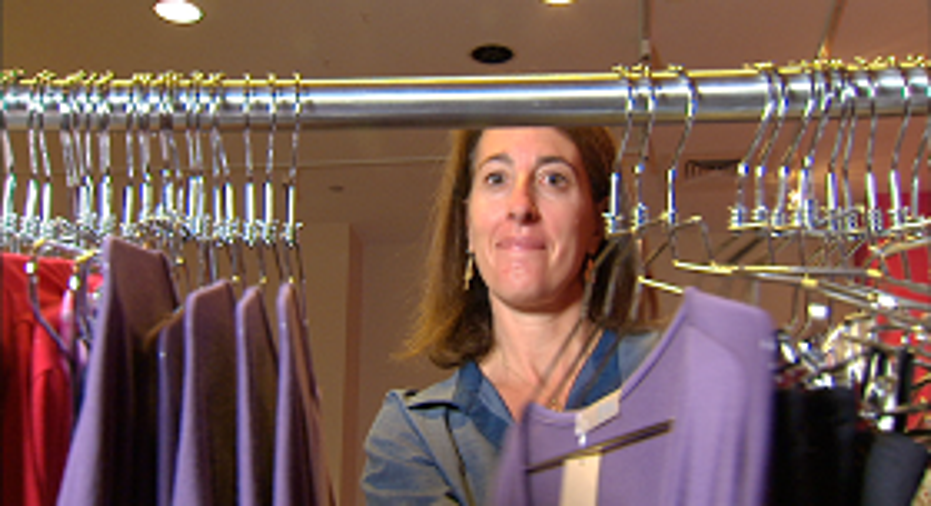Retail Pop-Ups offer Short-Term Growth for Testing

If you think pop-ups are only found in children's books, Lisa Burik has a story to share. But it's a tale whose ending isn't quite clear yet.
Burik, 46, owns Frankie's on the Park, a two-year-old teen clothing and accessory shop in the Lincoln Park neighborhood of North Chicago. Frankie's is named after Burik's teenage daughter (Burik opened the store after chauffeuring Frankie on countless shopping treks to the suburbs).
And this summer, Burik opened a “pop-up” Frankie's downtown in the Water Tower Place shopping center on Michigan Avenue.
OK, but what’s a pop-up? Simply put, it involves renting space for short-term use. The concept lets landlords fill unused space while small-business owners get to float new ideas and products without a long-term commitment.
Burik says her 48-day pop-up was an opportunity to see how Frankie's would do with a different demographic, while at the same time helping to build traffic for the company's website. “We chose the Water Tower because it's a tourist attraction. We're a destination store, so we wanted to see if the brand would resonate with a different audience," Burik says. "We also have an online store, so we wanted to make more connections with tourists who go to the mall. Once they shopped in our store, would they shop us online?"
The pop-up dynamic is happening in other cities and other retail segments. For the Los Angeles eatery Gram and Papa's, the idea of tacking chef Ludo Lefebvre’s nighttime pop-up, LudoBites, onto their operation for six weeks has boosted traffic and allowed the restaurant to gain a social networking foothold.
The jury is still out
Frankie's pop-up story lacks a completely happy ending, though, at least so far. For one thing, the pop-up didn't meet Burik's revenue projections: "I had forecasted between $60,000 and $70,000 for the 48 days, and we came in in the $40,000 to $50,000 range. It wasn't awful, but it wasn't what I expected it to be."
Another issue was the commitment to making sure the pop-up put its best foot forward. It took some four weeks and $15,000 in startup costs to get the space ready. "The sign that complied with mall requirements was $2,500 alone,” says Burik. “But if you're trying to get your brand out there, you need to invest enough to do it right. We didn't want it to look like it would be up for two weeks."
Pop-ups can fizzle if the space seems shabby or haphazard, agrees Dan Bliss, who advises retail businesses as president of PerfectBusiness, a national entrepreneur network of 30,000 members. "Pop-ups will fail if they're done unprofessionally," he says. "The worst pop-ups are low-budget operations that fill vacancies and put a few bucks in the landlord’s pocket. These look desperate, and they downgrade the whole shopping experience."
Plan and track goals and performance
The ultimate success of Frankie's pop-up experiment depends on whether the operation hits its goal of boosting traffic to the company's website. That's something Burik won't know for months. "We built up our e-mail list quite a bit, but it's hard to tell the long-term results because we don't know yet what our residual business will be," she says.
Burik encourages others to gather as exhaustive a demographic profile of the pop-up location as possible. In her case, while she knew Water Tower Place was a popular tourist destination, she hadn’t expected the "vast majority" of its shoppers to treat a mall trip as a form of leisure. "If I had thought about that kind of mix, I would have probably reduced my revenue forecasts," she says. "We also didn't need as much staff as we thought."
But the experience also yielded some pleasant surprises, such as the interaction between the pop-up and the Lincoln Park hub location. "A side benefit was being able to move inventory between the two stores,” says Burik. “If I needed something, I had it right away. That ready access was amazing."
Burik also feels that the pop-up achieved its essential goal of dipping the Frankie's brand into a completely different setting without a crippling time commitment. "We were very specific about when we did it, where we did it and for how long we did it," she says. "The idea of a pop-up is to create a surprise for the customer, something they might not expect."
Adds Bliss: "Exceptional pop-ups feature a strong element of scarcity. They're open for a limited time in a limited place, which creates a sense of urgency about when it opens, and again when it's about to close."
Still, the ending to the Frankie's pop-up story has yet to be written. Says Burik: "Whether it was a good investment or not, it's too soon to tell."
* For more articles like this, visit www.businessonmain.com. The Fox Business newsroom was not involved in the creation or production of this special advertising section.